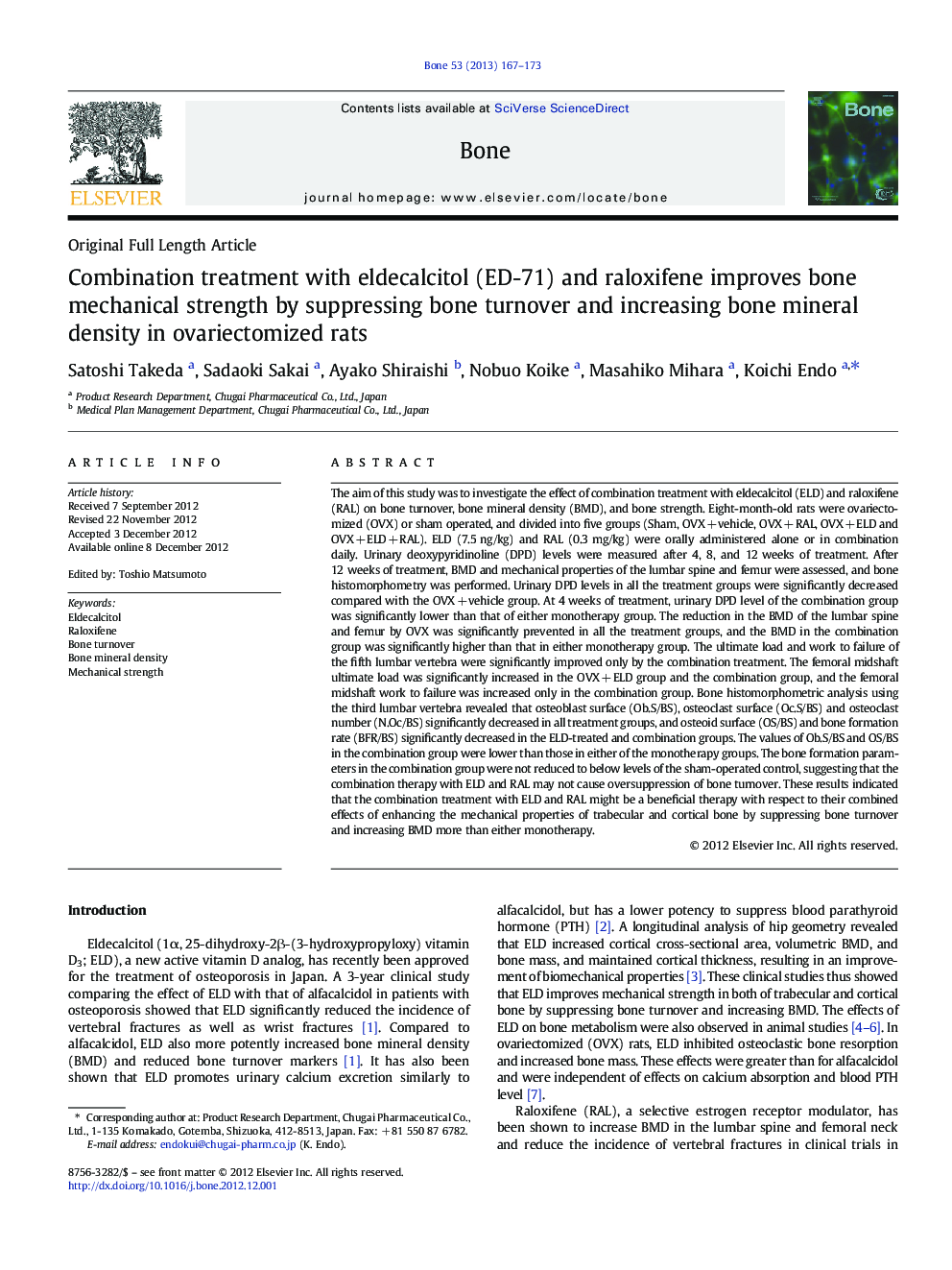| Article ID | Journal | Published Year | Pages | File Type |
|---|---|---|---|---|
| 5891201 | Bone | 2013 | 7 Pages |
The aim of this study was to investigate the effect of combination treatment with eldecalcitol (ELD) and raloxifene (RAL) on bone turnover, bone mineral density (BMD), and bone strength. Eight-month-old rats were ovariectomized (OVX) or sham operated, and divided into five groups (Sham, OVXÂ +Â vehicle, OVXÂ +Â RAL, OVXÂ +Â ELD and OVXÂ +Â ELDÂ +Â RAL). ELD (7.5Â ng/kg) and RAL (0.3Â mg/kg) were orally administered alone or in combination daily. Urinary deoxypyridinoline (DPD) levels were measured after 4, 8, and 12Â weeks of treatment. After 12Â weeks of treatment, BMD and mechanical properties of the lumbar spine and femur were assessed, and bone histomorphometry was performed. Urinary DPD levels in all the treatment groups were significantly decreased compared with the OVXÂ +Â vehicle group. At 4Â weeks of treatment, urinary DPD level of the combination group was significantly lower than that of either monotherapy group. The reduction in the BMD of the lumbar spine and femur by OVX was significantly prevented in all the treatment groups, and the BMD in the combination group was significantly higher than that in either monotherapy group. The ultimate load and work to failure of the fifth lumbar vertebra were significantly improved only by the combination treatment. The femoral midshaft ultimate load was significantly increased in the OVXÂ +Â ELD group and the combination group, and the femoral midshaft work to failure was increased only in the combination group. Bone histomorphometric analysis using the third lumbar vertebra revealed that osteoblast surface (Ob.S/BS), osteoclast surface (Oc.S/BS) and osteoclast number (N.Oc/BS) significantly decreased in all treatment groups, and osteoid surface (OS/BS) and bone formation rate (BFR/BS) significantly decreased in the ELD-treated and combination groups. The values of Ob.S/BS and OS/BS in the combination group were lower than those in either of the monotherapy groups. The bone formation parameters in the combination group were not reduced to below levels of the sham-operated control, suggesting that the combination therapy with ELD and RAL may not cause oversuppression of bone turnover. These results indicated that the combination treatment with ELD and RAL might be a beneficial therapy with respect to their combined effects of enhancing the mechanical properties of trabecular and cortical bone by suppressing bone turnover and increasing BMD more than either monotherapy.
⺠The combination treatment with ELD and RAL suppressed bone resorption marker compared with either monotherapy. ⺠The combination treatment with ELD and RAL increased bone mineral density compared with either monotherapy. ⺠The combination treatment with ELD and RAL increased biomechanical strength of lumbar vertebra and femur. ⺠The combination therapy with ELD and RAL did not lower bone formation parameters below sham control level.
